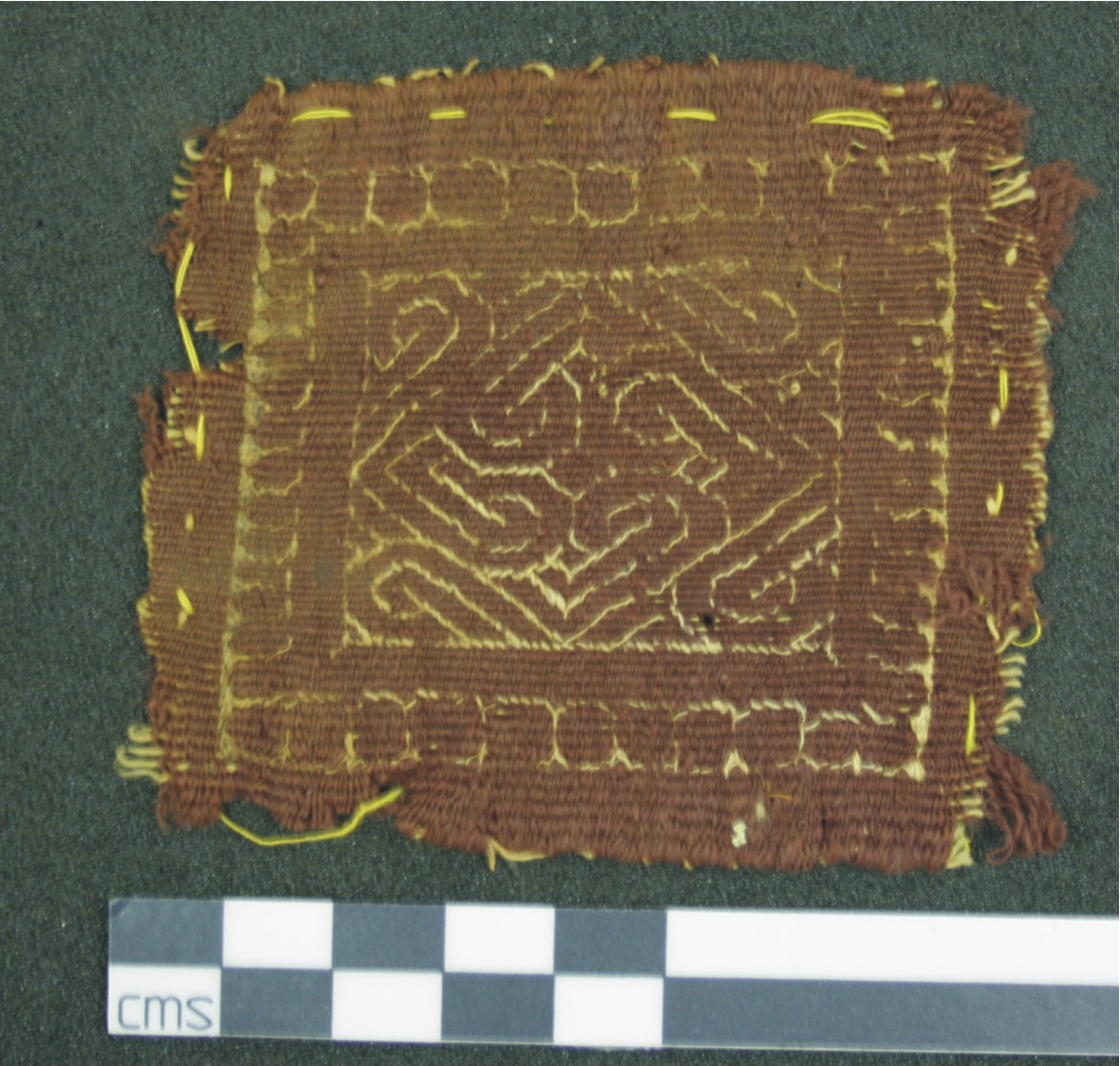EC1255
EC1255
 This has an interlace design. ‘Complex interlace patterns are almost universally believed to have protective powers, guarding against the evil eye. The tendency when looking at such a pattern is to trace the path of interlace visually, thus keeping the eye moving. (It was the fixed stare that was considered dangerous.)’ (Carroll 1988, 86).
This has an interlace design. ‘Complex interlace patterns are almost universally believed to have protective powers, guarding against the evil eye. The tendency when looking at such a pattern is to trace the path of interlace visually, thus keeping the eye moving. (It was the fixed stare that was considered dangerous.)’ (Carroll 1988, 86).
Such medallions would have been used to decorate tunics in first millennium A.D. Egypt. Tunics of the Late Roman period were decorated with medallions placed in pairs. One motif would go over each shoulder and the other two over each knee. It has been suggested that these were so placed to protect the arm and knee joints from harm (Carol 1988, 84).
Erikson, M. 1997. Textiles in Egypt 200-1500 AD in Swedish Museum Collections. Gothenburg: University of Gothenburg.
Lewis, S. 1969 Early Coptic Textiles. Stanford: Stanford University.
Pritchard, F. 2004 Clothing Culture. Dress in Egypt in the First Millennium AD. Clothing from Egypt in the collection of The Whitworth Art Gallery, The University of Manchester. Manchester: University of Manchester.